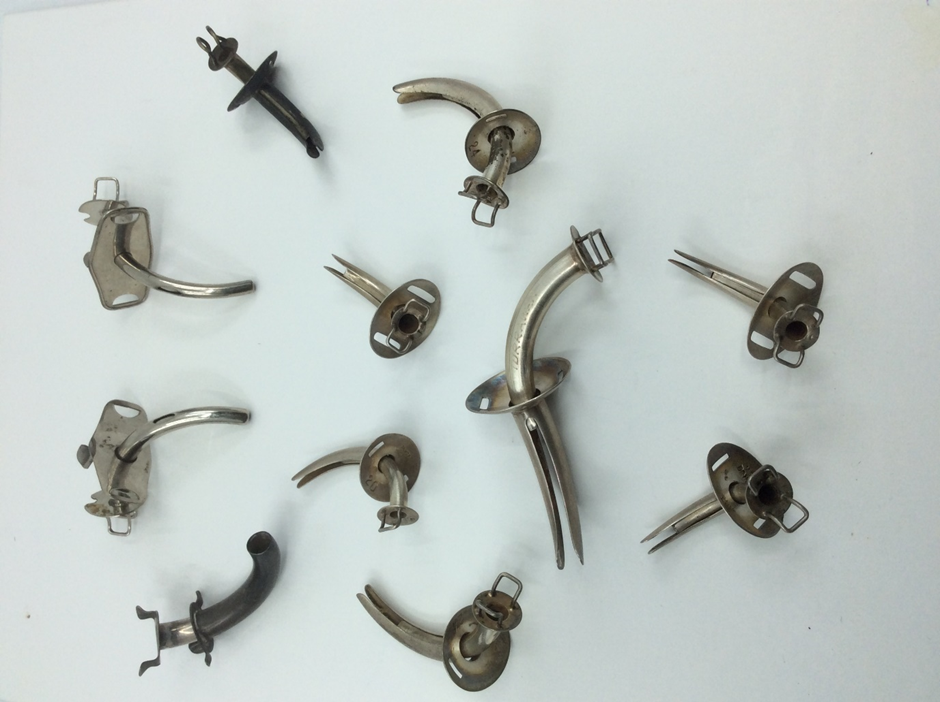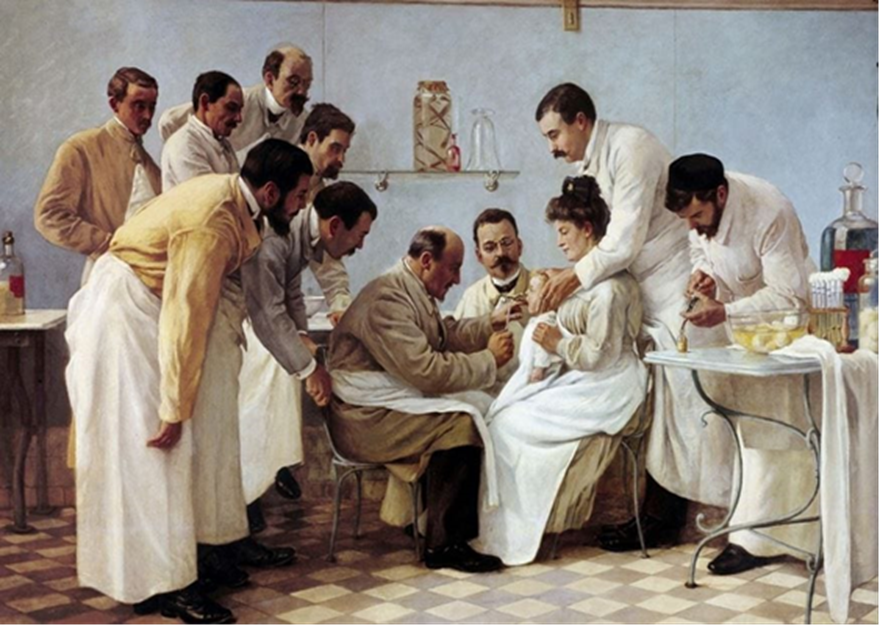Tracheostomy and tracheal intubation
A note by Robert Craig
Tracheostomy has been commonplace for more than a century. It was a precursor to endotracheal intubation, the procedure which is usually required for maintaining respiration for ventilating unconscious or paralysed patients. Tracheostomy was primarily used for bypassing the airway obstruction due to oropharynx by injury or most commonly by the hardened exudate common in the tonsillar area due to diphtheria. However, by reducing dead space during inadequate respiration it was used to improve ventilation in poliomyelitis and other situations of chronic paralysis of the muscles of respiration.
The museum collection has many examples of tracheostomy tubes, usually made of silver which, like gold, offered a modicum of self-sterilisation. Some are in boxed sets and come with the necessary instruments for performing a tracheostomy. They all contain several small sizes for use in infants.


Taken from Hektoen International; An online Journal of medical humanities www.hekint.org
Hetkoen International is a freely accessible online journal which offers contributions on the History of Medicine with a focus on aspects from the arts and humanities. This illustration comes from the August 2020 edition.
